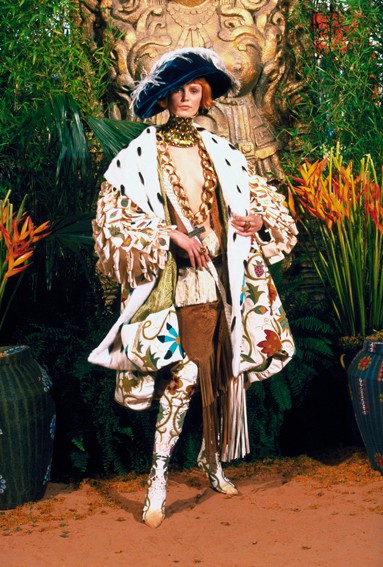In amongst the shifting territories of taste and style, the fashion industry has always displayed a fundamental talent for elevating the ‘ugly’.
Whether 18th-century ostentation or 1980s exhibitionism, vulgarity plays a fundamental role in differentiating ‘fashion’ from the clothes on our backs. It’s this notion of taste (good and bad) that is put under the microscope in one of the Barbican’s hotly anticipated autumn exhibitions ‘The Vulgar: Fashion Redefined’.
Conceived by leading fashion curator Judith Clark and psychoanalyst writer Adam Philips, ‘The Vulgar’ tracks the relationship between fashion and vulgarity over 500 years, from its Renaissance origins through to the present day.
Weaving together more than 120 objects of historic dress, couture and ready-to-wear, textiles, film and photography, the ‘The Vulgar’ aims to demonstrate the elastic notion of taste, and poses the question: ‘what makes something vulgar?’
The exhibits have been drawn from public and private collections around the world and carved up into 20 categories that have, throughout history, caused the deepest offense: too excessive, too kitsch, too sexualised, too camp and, of course, too popular. Contemporary designers like Raf Simons and Riccardo Tisci appear alongside the fashion houses that made them famous, all named as arbiters of high fashion and arguably poor taste.
Some installations are devoted to the materials, accessories and embellishments that have spent as much time classed as vulgar as they have in vogue. Others need no context: think Vivienne Westwood and Malcolm McLaren’s tits top. Even the fashion exhibition itself comes under the microscope, as does the industry’s fraught relationship with the department store and the catwalk, in a series of historically significant window displays that were received as outrageously vulgar when first revealed.
The Barbican’s head of visual arts Jane Alison called the concept “bold and brilliant”. “Judith Clark and Adam Phillips have created a highly original, redefining and hugely enjoyable exhibition about fashion past and present,” she said. “Playing with juxtapositions, different themes and vistas, they’ve set the stage for visitors to wonder, ponder, question, reflect or just revel in why some costumes are considered vulgar, how that changes through time, context and experience.”
The Vulgar: Fashion Redefined is on at the Barbican from 13 October to 5 February.







